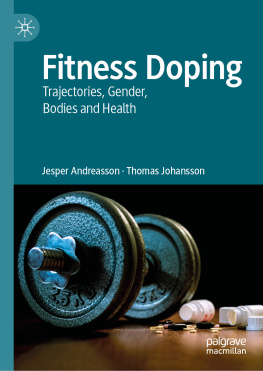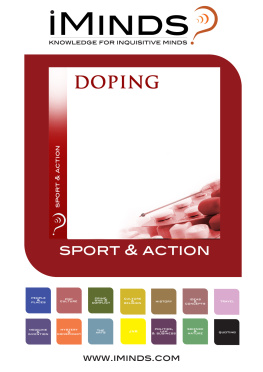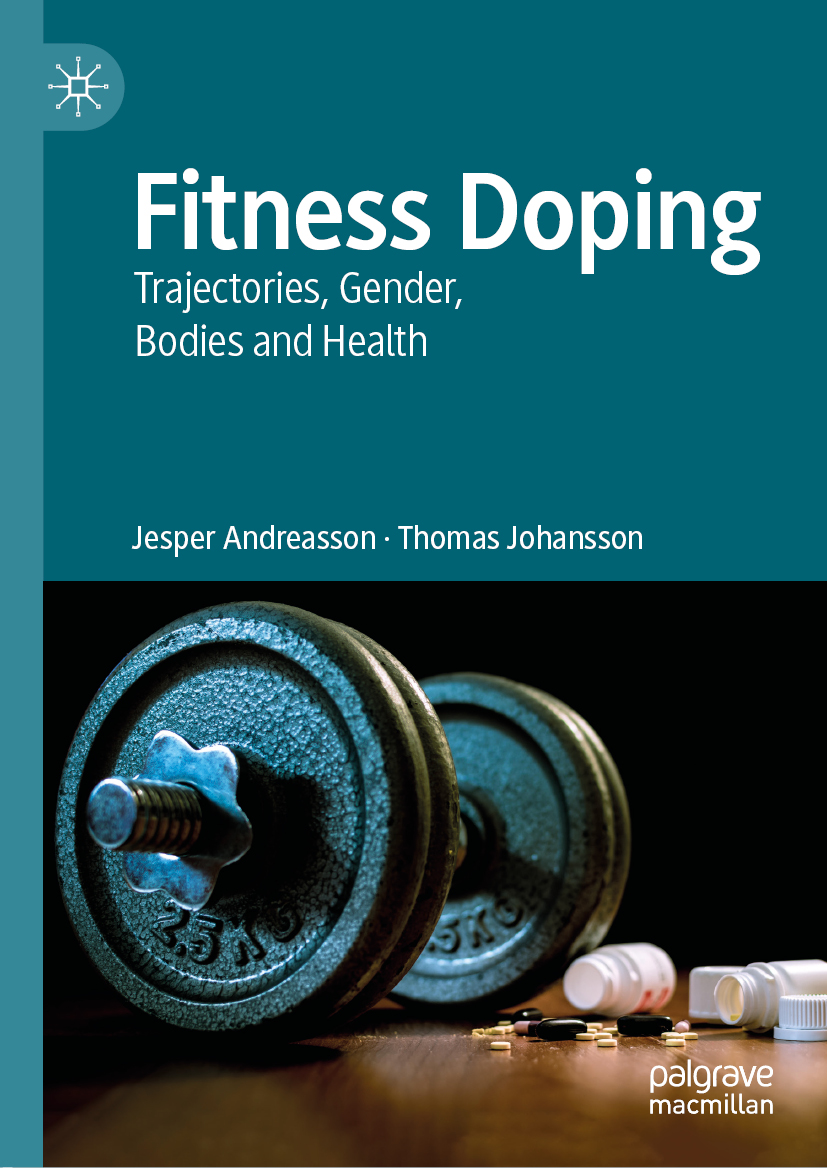Jesper Andreasson
Department of Sport Science, Linnaeus University, Kalmar, Sweden
Thomas Johansson
Department of Education, Communication and Learning, University of Gothenburg, Gothenburg, Sweden
ISBN 978-3-030-22104-1 e-ISBN 978-3-030-22105-8
https://doi.org/10.1007/978-3-030-22105-8
The Editor(s) (if applicable) and The Author(s), under exclusive license to Springer Nature Switzerland AG 2020
This work is subject to copyright. All rights are solely and exclusively licensed by the Publisher, whether the whole or part of the material is concerned, specifically the rights of translation, reprinting, reuse of illustrations, recitation, broadcasting, reproduction on microfilms or in any other physical way, and transmission or information storage and retrieval, electronic adaptation, computer software, or by similar or dissimilar methodology now known or hereafter developed.
The use of general descriptive names, registered names, trademarks, service marks, etc. in this publication does not imply, even in the absence of a specific statement, that such names are exempt from the relevant protective laws and regulations and therefore free for general use.
The publisher, the authors and the editors are safe to assume that the advice and information in this book are believed to be true and accurate at the date of publication. Neither the publisher nor the authors or the editors give a warranty, expressed or implied, with respect to the material contained herein or for any errors or omissions that may have been made. The publisher remains neutral with regard to jurisdictional claims in published maps and institutional affiliations.
Cover image: Georgios Tsichlis/Alamy Stock Photo
This Palgrave Macmillan imprint is published by the registered company Springer Nature Switzerland AG
The registered company address is: Gewerbestrasse 11, 6330 Cham, Switzerland
Preface
Both in research and in the public discourse, the use of illicit performance- and image-enhancing substances (PIED) has largely been connected to the context of formally governed and competitive sport. For instance, tremendous attention has been paid to cyclists, weightlifters, sprinters, and others, and scholars have discussed the different means (e.g., anabolic androgenic steroids, human growth hormones, and blood doping) elite sport athletes have used to boost their competitive edge. In the shadow of this discussion, the use of doping in the context of gym and fitness culture has largely (in comparison) proceeded unnoticed. Fitness Doping has been written with the intent to rectify this imbalance and take a closer look at recent developments in drug use practices in the context of gym and fitness culture.
Fitness Doping is the result of our long collaboration and our interest in the global development and growth of gym and fitness culture. We have previously published The Global Gym. Gender, Health and Pedagogies (2014), with Palgrave Macmillan, in which the franchising and cultural commercialization of fitness are discussed. Later, we published a second book, Extreme Sports, Extreme Bodies. Gender, Identities and Bodies in Motion (2019). In this second book, we took a more carnalizing and phenomenological approach to the sports of bodybuilding, ironman triathlon, and mixed martial arts. In the volume at hand, which is to be understood as the third and final part of the puzzle, we have aimed to synthetize the outcomes of our previous writings and to contribute to an ongoing debate on fitness doping, health, and gender.
In the book, we will discuss how the global development of gym and fitness culture has impacted the general fitness doping demography in recent decades, as well as the trajectories leading to doping and the bodily understandings/negotiations connected to the use of illicit drugs. Clearly, it is not only bodybuilders and dedicated weightlifters who use doping in these contexts. Initiating our work, we saw the need for a more problematized and theoretically informed discussion on fitness doping trajectories and the gendering of fitness doping. We are sincerely grateful that Sharla Plant and Poppy Hull at Palgrave Macmillan, as well as the anonymous reviewers, found our proposal interesting and relevant, making it possible for us to write and publish the book at hand.
This book builds on data that have mainly been gathered in a Swedish context and using an ethnographic approach. In Sweden, not only is doping prohibited in terms of trafficking, but the presence of such substances in the body is also illegal. We have met and talked to people operating within the context of gym and fitness culture whoin different ways and to different extentsuse doping. By generously sharing their experiences, understandings, and perspectives on things, these people have engaged in discussions that could have legal repercussions. We are sincerely grateful for their generosity and would like to thank all of the women and men who took the time to talk with us and included us in their everyday lives. We would also like to express our appreciation to some colleagues and friends for their efforts and support. For their role in a larger project, we would like to thank our project collaborators Ellen Sverkersson, Ph.D. student at Linnaeus University, and Johan hman, at the anti-doping network PRODIS (prevention of doping in Sweden). We would also like to express our gratitude to the Swedish Research Council for Health, Working Life and Welfare (FORTE) for financial support. Thank you also to Andreas Bjrke and Marie Lann.
Further, we would like to thank some scholars for their input and generous contribution in the form of reading, commenting on and offering their insights on our work. Thank you Ask Vest Christiansen, Aarhus University, and April Henning, University of Stirling. April contributed greatly as a co-author on one of the chapters (Chapter ). We also wish to thank Karen Williams for proof reading and editing the text. Karen, your ways with words always bring clarity to our thoughts.
Some chapters in the book build on articles previously published by the authors in academic journals, including Sport in Society , Performance Enhancement and Health , Journal of Sport and Social Issues and Social Sciences .
Jesper Andreasson
Thomas Johansson
Kalmar, Sweden Gothenburg, Sweden
May 2019











